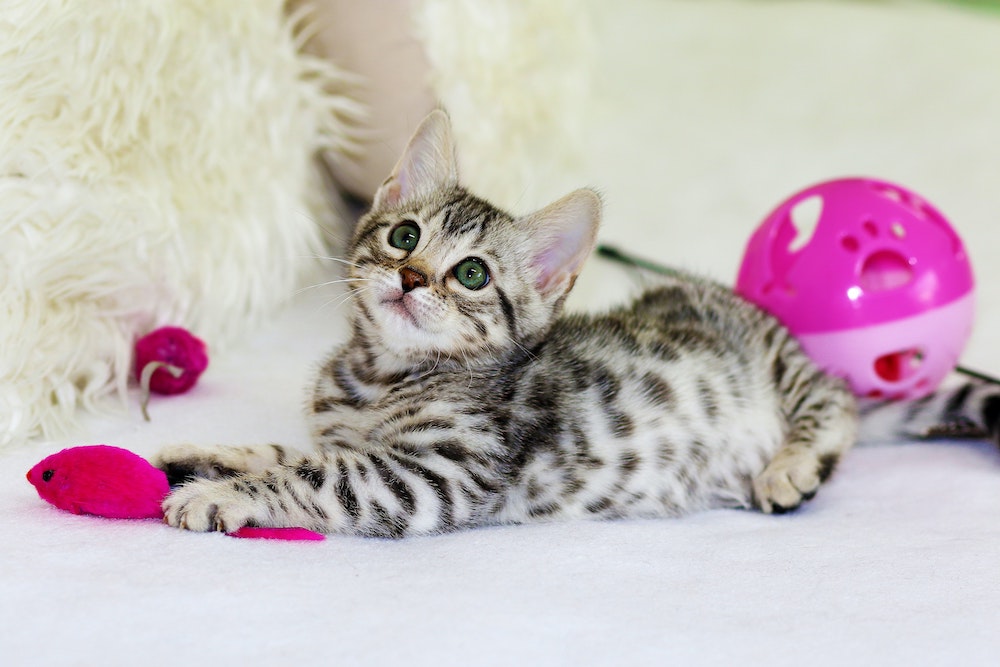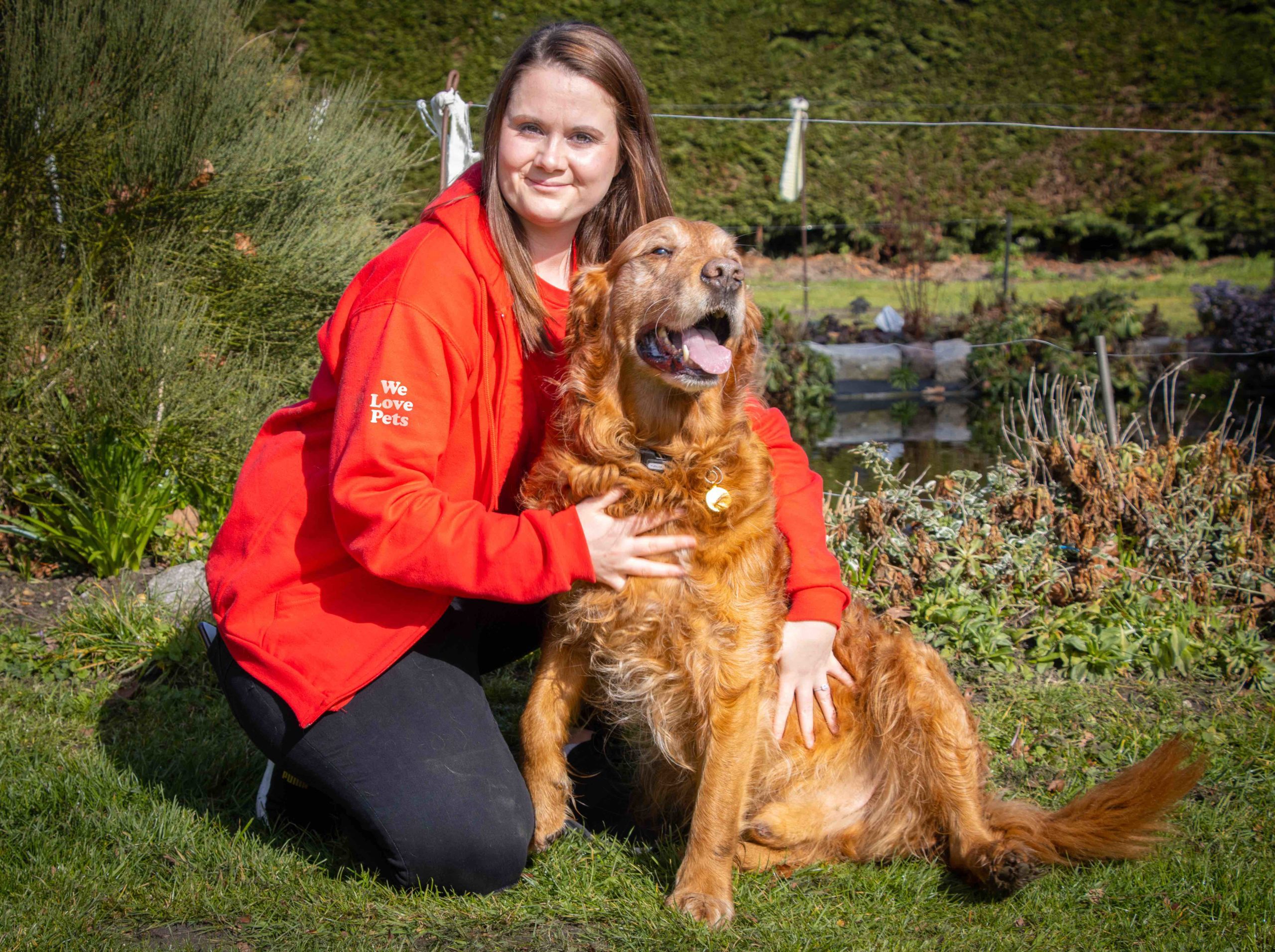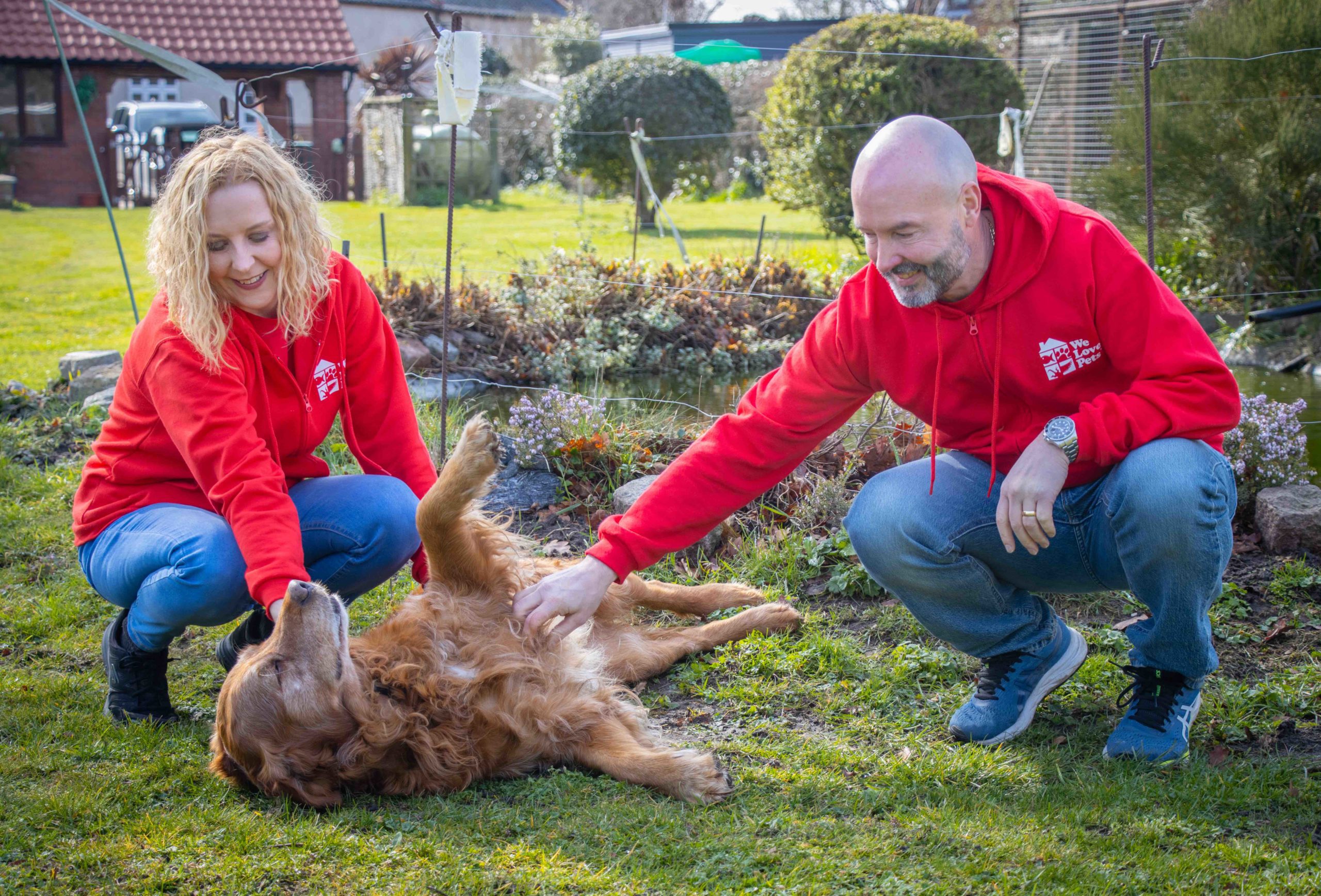When bringing a new kitten into the household, first impressions of them and your existing pets are the difference between lifelong friendships or animosity. Filling their first meetings with positive interactions is much more likely to help them be friends furever!
Introducing Your Kitten to Your Dog
Preparing for their first interaction!
The dog you have might make a difference when considering getting a kitten. Breeds like Golden Retrievers, Labradors, Beagles, and those similar in nature are much more likely to get along with your new kitty.
You might also need to consider the age of your current pets and the difference between them and your kitten. Kittens will be energetic and explorative, and if your dog is much older, they might not be as considerate of this behaviour. Especially considering cats generally being a lot smaller than dogs, obvious exceptions aside, a grumpy old dog might accidentally hurt a young and spritely kitten if it gets too enthusiastic about its new family.
Make sure both animals are fully vaccinated and checked for parasites.
The first meet!
Bringing your kitten into the home is easy; keeping curious pets out of their space is more complicated. But it is crucial. Bring your kitten to a room or area where they will have time alone, enough for them to come out and explore on their own accord. You don’t want your existing dog to meet each other before your kitten is happy and comfortable in the home.
Once your kitten has gotten used to being in that room, allow them to explore the rest of the house, once again keeping your dog away from it. This allows the cat to get used to all the new smells of their new family and prepare for what they’ll be up against! This will avoid any aggression and territorial battles between the animals. You may also want to bring some of the kitten’s belongings for your dog to sniff and get used to as well, so they aren’t taken by surprise when they meet the kitten.
Keep them separated to begin with, even as you are introducing them, maybe behind a baby gate or with your dog on a lead so you can restrain its movement should it get overexcited. Try to take your dog for a nice long walk before meeting, avoid any chasing or fetch activities, though, so they don’t unlock those desires when they get home too. Don’t force them to interact positively, instead provide an incentive to do so by giving them a treat or play toys when they interact well together. Allow escape routes for your kitten, should they become frightened or overwhelmed by the meeting. This will help avoid claws coming out too much. Take breaks with your interactions every now and then so they don’t become overwhelmed by the whole ordeal!
The first few weeks!
Make sure the two animals aren’t left unattended for a while until you know they are both perfectly happy around each other and that it will be safe to do so. Make sure that your dog will look at you more often than the kitten since keeping focus on you will make sure they know that you are also watching them. They will be less likely to play up if they feel you are always watching.
Even though it’s easier to be cautious, trust your pets to behave well, and don’t discourage behaviour before you understand what is happening. For example, you may see your dog approaching the kitten, but don’t call them away before you know the follow-up action. You might assume the bigger animal might act out; however, they might just be giving a curious sniff. It’s important not to get too carried away and snuff out positive interactive behaviours and negative ones.
Most importantly, be patient with them. It can take time for cats to begin to trust their surroundings and the things in it, so just remember to take your time with introducing them to your home. It won’t happen overnight, but their comfort also won’t take forever.
Introducing Your Kitten to Your Cat
Preparing for their first interaction!
Make sure to organise a space in the house that your kitten can stay that your existing cat cannot access. This is so your kitten will feel safe enough to sleep there and feel as if they can relax in that space without getting overwhelmed.
This area should include everything they might need; a bed, water and food, a litter box, toys, scratching posts. Anything that will keep your kitten happy in the new home.
Similarly, to introducing the kitten to dogs, you should let your kitten become used to the space and the home before they are brought together. This may take a few days, it may take a few weeks. Let it come naturally, and don’t force your kitten’s behaviour.
The first meet!
Allow your kitten to explore the house while keeping your cat out of the room. Allow your kitten to do scenting rituals, such as rub against furniture or snooze on pillows. When your existing cat returns, they will realise that the kitten has been in the room and know what they’re expecting when you actually introduce them. Introducing both pets to each other this way first allows them to get used to both of them being in the house and not being strangers when they do first meet.
Once they are both happy with each other’s scent, allow them to see each other through a physical barrier, like an ajar door, a mesh barrier, or a baby gate. They can get used to seeing each other though they are still kept separated so there won’t be any fights. The idea is to just let them get a feel for one another, watch both animals to see how they react, and move on once there are no signs of aggression or fear.
Once they get used to seeing each other, try bringing them face to face and together, doing something like eating. Put bowls close enough that your pets can see each other, but not close enough that they might steal a bite or two from the other bowl and become aggressive or territorial. If they want to interact with one another at this point, let them, since it is a good sign that they feel comfortable with one another. Though make sure to keep an eye on them both as they still get to know one another.
Throughout this time, they may start exploring the boundaries between them. Play pouncing and fighting may look like a problem, but unless either of them shows signs of violence, you may need to go back a few steps. Signs of violence might be hissing and puffing up their fur. If this happens at any point, end the interaction and bring them both to their safe spaces and allow them to relax and calm down. It is important not to force positive behaviour by forcing them to stay with each other.
Treats can help keep your pets on track. Offer a treat for both whenever you see them interacting well to reinforce the positive behaviour. Do this until they both seem completely comfortable together.
The first few weeks!
Routines can help your kitten feel calmer in the house, and following your cat’s existing routine will bring them back to feeling normal. Feed them at the same time every day, let them come together every day at the same time, but allow them to take breaks away from one another every now and then. Keeping to a routine will help minimise stress.
Make sure not to leave them alone for the first few weeks of them being with you, so you can keep an eye on any behaviour, good or bad, and either encourage or discourage it. It’s essential to make sure they know that you’re there to split up any fighting, but also that you don’t overreact to simple things. If your cats express an interest in one another and you jump into action to prevent anything that hasn’t actually happened yet, they might feel anxious about interacting. Keep calm at all times to allow them to feel natural and comfortable.
Introducing your new kitten to existing pets may seem daunting when you consider the steps needed to make sure that both animals are happy. Still, it is essential to consider that these first meetings will affect their entire lives spent together. You don’t want them to start off on the wrong foot, and it will be great to have pets that genuinely get along all the time, so you don’t have to worry too much about them. These starting steps are long but necessary, and it won’t be forever, just until they feel comfortable.




